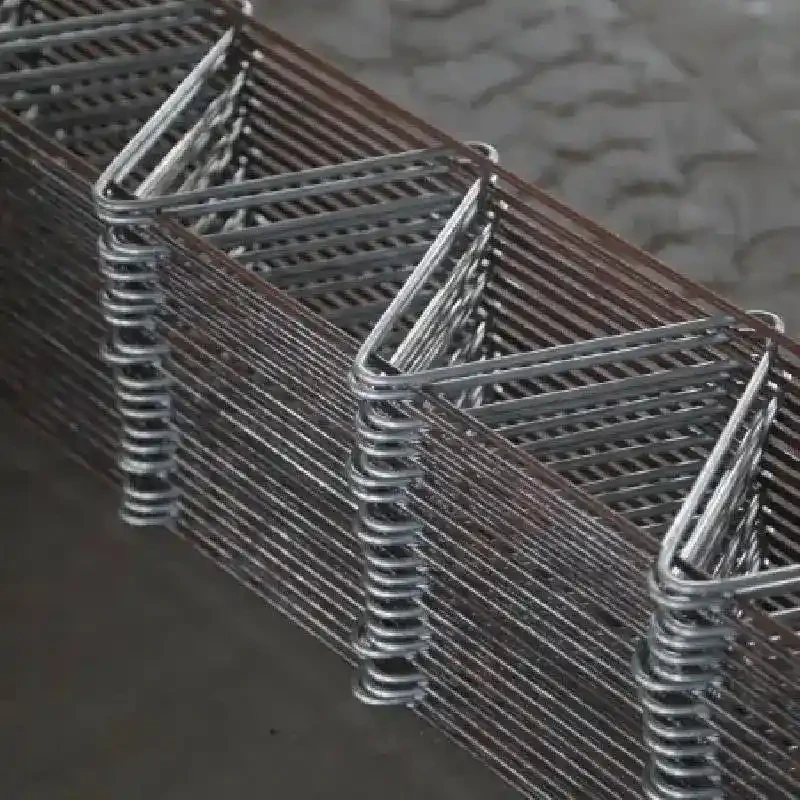
- Mobile Phone
- +8613931874955
- sales@cntcmetal.com
butterfly ties cavity walls
Butterfly Ties and Their Impact on Cavity Wall Construction
In the world of construction and architecture, cavity walls have gained immense popularity due to their efficiency, durability, and insulation properties. Among the various components that contribute to the integrity and performance of these walls, butterfly ties play a crucial role. This article explores what butterfly ties are, their significance in cavity wall construction, and the advantages they offer.
Understanding Cavity Walls
Cavity walls consist of two separate leaves—an external wall and an internal wall—separated by an air gap. This design serves multiple purposes, such as improving thermal insulation, reducing moisture penetration, and enhancing structural strength. The two leaves are typically complemented by horizontal and vertical components, including wall ties, which connect them while allowing for thermal movement and minimizing moisture transfer.
What Are Butterfly Ties?
Butterfly ties are a type of wall tie used to secure the two leaves of cavity walls. Unlike traditional ties, which are usually straight and uniform, butterfly ties have an innovative design reminiscent of a butterfly's wings. The broader, wing-like edges provide greater surface area and enhance the tie's ability to anchor the leaves together.
These ties are typically fabricated from corrosion-resistant materials, ensuring longevity and durability. Their unique shape not only improves their anchoring properties but also minimizes the risk of thermal bridging—an important factor in maintaining the energy efficiency of a building.
Importance of Butterfly Ties in Construction
1. Enhanced Structural Stability Butterfly ties provide superior anchoring between the two leaves of a cavity wall, which enhances the overall stability of the structure. This is crucial, especially in regions prone to strong winds or seismic activities, as they help distribute loads more evenly across the wall.
butterfly ties cavity walls

2. Improved Insulation By connecting the two walls without creating significant thermal bridges, butterfly ties help maintain the insulation properties of cavity walls. This is particularly beneficial for energy efficiency, leading to lower heating and cooling costs in buildings.
3. Moisture Control The design of butterfly ties also aids in moisture management. Their placement aids the drainage of water that may seep into the cavity from various sources, thus preventing moisture-related issues such as mold and structural deterioration.
4. Ease of Installation Butterfly ties can be easier to install compared to traditional wall ties, as their shape allows for a more versatile application within the cavity. This flexibility can lead to time savings during the construction process.
5. Compliance with Building Codes Many modern building codes and regulations emphasize the importance of energy efficiency and durability. Butterfly ties meet these requirements, making them a popular choice among engineers and architects who prioritize sustainability in their designs.
The Economic Advantage
While there may be an initial investment in butterfly ties compared to standard options, the long-term benefits can outweigh these upfront costs. Improved energy efficiency leads to reduced utility bills, and enhanced structural integrity reduces maintenance expenses over time. Additionally, their ability to mitigate moisture-related issues can save homeowners and builders from costly repairs associated with mold and rot.
Conclusion
Butterfly ties represent a significant advancement in the design and implementation of cavity wall construction. Their unique shape, combined with practical benefits such as structural stability, improved insulation, and moisture control, demonstrates their value in modern architecture. As the construction industry continues to evolve and prioritize sustainability, the use of innovative products like butterfly ties will likely become more prevalent. The future of cavity wall construction looks promising, driven by efficiency, resilience, and an unwavering commitment to quality.
By choosing butterfly ties for cavity walls, builders can not only comply with modern standards but also contribute to a more sustainable built environment, paving the way for future innovations in construction practices.
share:
-
Creative Ways to Decorate Your Tomato CageNewsAug.22,2025
-
Common Mistakes When Installing Brick Wall TiesNewsAug.22,2025
-
Customizing Conical Springs for Aerospace ApplicationsNewsAug.22,2025
-
Galvanized Tie Wire for Binding PipesNewsAug.22,2025
-
Environmental Impact of Using Snake Spacers in PlumbingNewsAug.22,2025
-
Sacrificial Formwork Systems for Complex StructuresNewsAug.22,2025
-
Wall Ties for Concrete: Invisible Guardians of Building Structural StabilityNewsAug.08,2025
